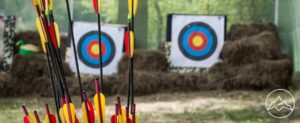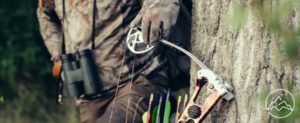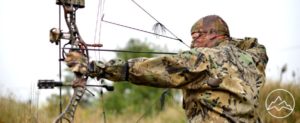In the realm of archery, compound bow cams act as the driving force behind power and speed. Like the intricate gears of a well-oiled machine, these cams determine the efficiency and effectiveness of a compound bow. With four distinct types to choose from – single cams, dual cams, hybrid cams, and binary cams – each style presents its own set of advantages and disadvantages. Single cams offer ease of maintenance and a quieter operation, ideal for beginners or those seeking simplicity. Dual cams, on the other hand, offer more power and velocity, albeit at the cost of increased tuning requirements. Hybrid cams strike a balance between the two, while binary cams provide exceptional speed and power at the expense of increased complexity. The elliptical shape of the cams also determines the let-off, ranging from 60 to 90%. By understanding the intricacies of compound bow cams, archers can harness the desired speed and power, unleashing their full potential on the range.
Key Takeaways
- Compound bow cams are the main component that gives compound bows their power and speed.
- Different shapes of bow cams have a direct correlation to the bow’s speed and draw cycle.
- There are four types of compound bow cams: single cams, dual cams, hybrid cams, and binary cams.
- Personal preferences and skill level determine the choice of compound bow cam.
Types of Compound Bow Cams
There are four types of compound bow cams: single cam bows, dual cam bows, hybrid cam bows, and binary cam bows, each offering different advantages and considerations in terms of power, speed, maintenance, and tuning requirements. Single cam bows have several pros, including being quieter, easier to work on, and having improved technology. However, they sacrifice some speed compared to other cam types. Hybrid cam bows use two cams to solve synchronization issues and require less maintenance than dual cam bows. They offer a good blend of power and accuracy without as much concern for tuning. Binary cam bows have two independent cams, providing excellent speed and power. However, they can be harder to work on. Understanding the performance differences between hybrid and binary cam bows is crucial in choosing the right cam for individual preferences and skill level.
Choosing the Right Cam
Optimal selection of the appropriate cam for a compound bow requires careful consideration of factors such as bow maintenance requirements, tuning complexity, and personal skill level. When choosing a compound bow cam, there are several factors to consider. Each cam style has its own pros and cons. Single cam bows, for example, are known for their ease of maintenance and improved technology. They are suitable for beginners or those who prefer a lower maintenance bow. On the other hand, dual cam bows offer more power and speed but require more tuning. Hybrid cam bows provide a good blend of power and accuracy, with less concern for tuning or maintenance. Finally, binary cam bows have two independent cams for excellent speed and power, but they can be harder to work on. Ultimately, the choice of compound bow cam depends on personal preferences and skill level.
Replacing and Upgrading Cams
Replacing and upgrading compound bow cams can be done to improve performance or address damage, with prices for replacements ranging from $50 to $400. Upgrading the cam of a compound bow can offer several benefits. Firstly, it can increase the bow’s speed and power, allowing for more accurate shots and longer effective range. Secondly, upgrading the cam can result in a smoother draw cycle, making it easier to pull back the bowstring. Additionally, a new cam can improve the overall feel and comfort of shooting the bow. To properly replace a compound bow cam, it is essential to consult the manufacturer’s guidelines and follow the specific instructions provided. This typically involves removing the old cam, aligning and installing the new cam, and ensuring proper synchronization with the other cam if it is a dual or hybrid cam system. It is recommended to seek assistance from a professional if unsure about the replacement process.
Frequently Asked Questions
How do compound bow cams affect accuracy?
The role of compound bow cams in accuracy is significant as they directly impact shooting precision. The design of the cam plays a crucial role in determining the accuracy of a compound bow. Different cam styles, such as single cams, hybrid cams, binary cams, and dual cams, offer varying levels of accuracy. Factors such as synchronization, smooth draw cycles, and power distribution are influenced by the cam design, ultimately affecting the bow’s overall accuracy.
Can compound bow cams be adjusted to change the let-off percentage?
Can compound bow cams be adjusted to change the let-off percentage? Adjusting the let-off percentage on compound bow cams is possible and can be done through various methods. One way to change the let-off is by adjusting the position of the draw stops or modules on the cams. This can be achieved by either moving the draw stops or changing the position of the module’s slots. Additionally, some compound bows may have adjustable let-off systems that allow for fine-tuning the percentage to suit the shooter’s preference.
Are there any disadvantages to using single cam bows?
Single cam bows offer several advantages over dual cam bows, including quieter operation, easier maintenance, and improved technology. However, they also have some disadvantages when compared to their dual cam counterparts. Single cam bows generally sacrifice some speed and power for a smoother draw cycle. Additionally, they may require more tuning to achieve optimal performance. Therefore, while single cam bows are suitable for beginners or those seeking lower maintenance, those looking for maximum speed and power may prefer dual cam bows.
What are some common maintenance tips for compound bow cams?
Proper lubrication, regular inspection, and correct timing are essential maintenance tips for compound bow cams. Adequate lubrication of the cams and axles ensures smooth operation and reduces friction, preventing premature wear. Regular inspection of the cams, strings, and cables allows for early detection of any damage or wear, ensuring safe and efficient performance. Correct timing of the cams ensures proper synchronization, maximizing the bow’s speed and accuracy. These maintenance practices are crucial for ensuring the longevity and optimal performance of compound bow cams.
Is it possible to mix and match different types of compound bow cams on the same bow?
Mixing and matching different types of compound bow cams on the same bow is not recommended. Each type of cam has its own unique characteristics and benefits. Single cam bows are suitable for beginners or those who prefer lower maintenance, while dual cam bows offer more power and speed but require more tuning. Hybrid and binary cam bows provide a good blend of power and accuracy with less concern for tuning or maintenance. It is important to choose the right cam for your compound bow based on your personal preferences and skill level.
Conclusion
In conclusion, compound bow cams are essential components that determine the power and speed of compound bows. Understanding the different types of cams, such as single cams, dual cams, hybrid cams, and binary cams, is crucial for achieving the desired speed and power in archery. Choosing the right cam style depends on personal preferences and skill level. Cams can be replaced or upgraded if needed, with prices varying depending on the type of cam. So, unleash the potential of your compound bow by selecting the perfect cam for maximum speed and power in your archery journey.











